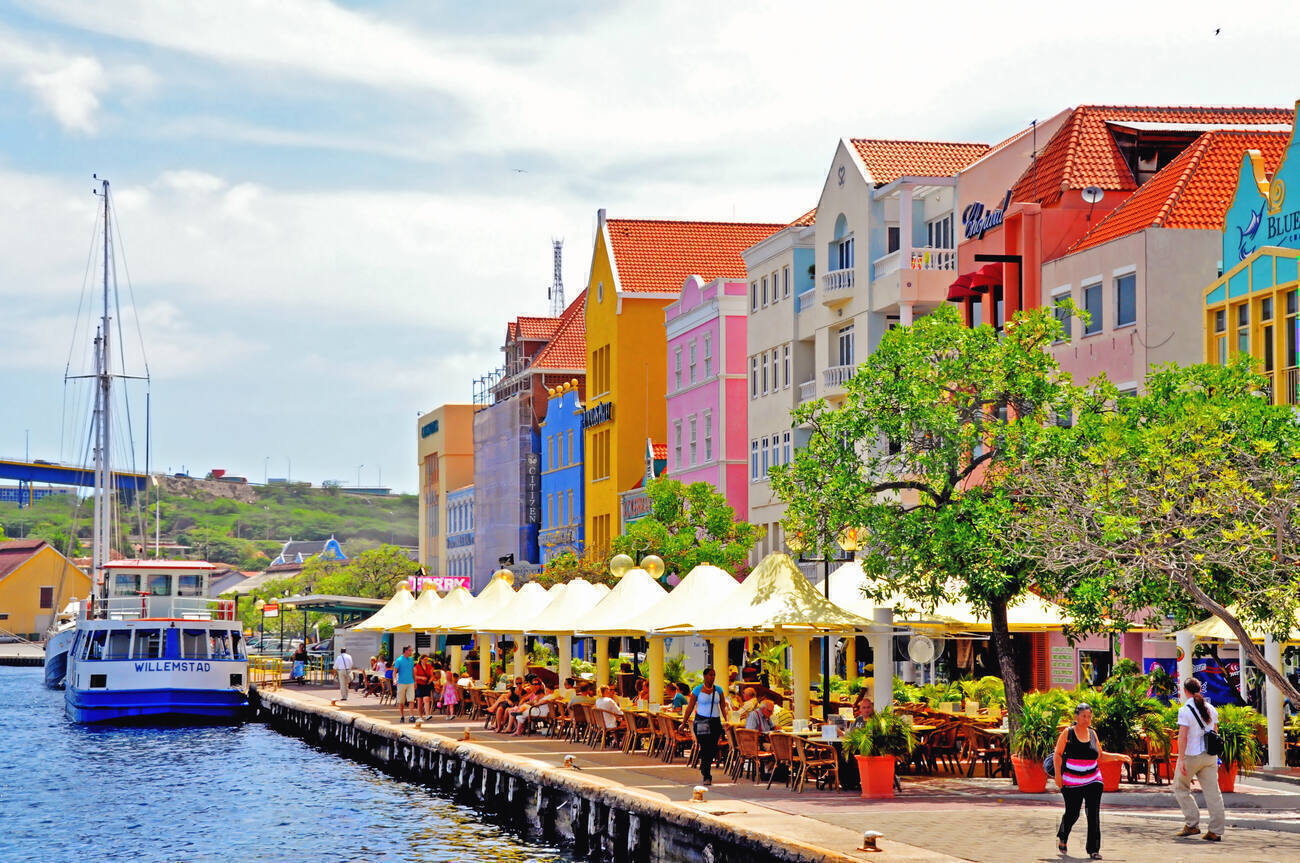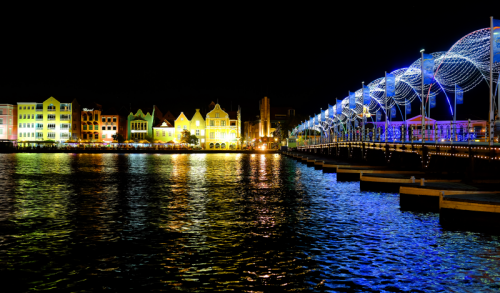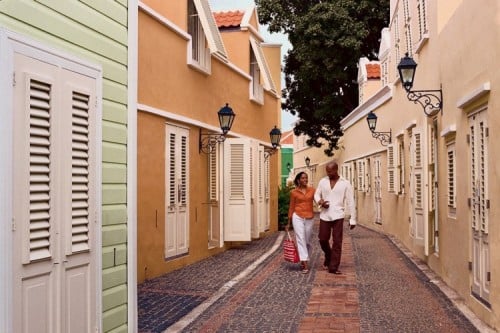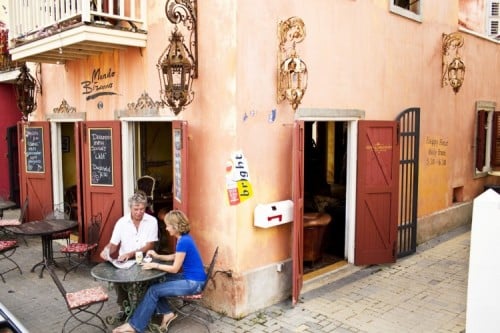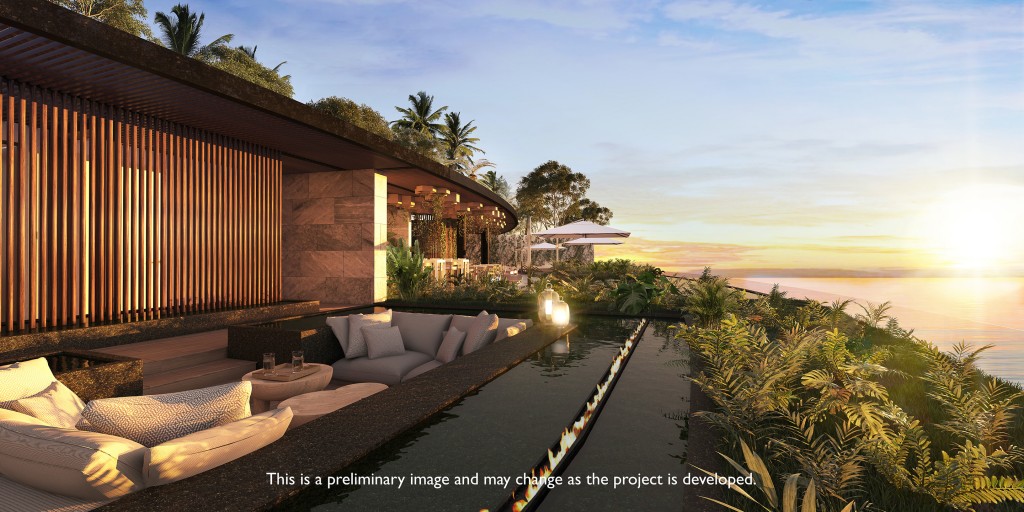Europe may be a bit of a stretch for many these days. But ready to step in? Caribbean Curaçao, an island with a lot of Continental flair.
For every traveler that revels most deeply in Caribbean blues, there’s another one that feels that it’s Europe or bust. And this group is the one that’s been feeling the hemispheric anchor of COVID-19 the hardest. Europhiles across the United States are desperately fiending for a taste of the Old World, but what’s an advisor to do when those borders are closed to us?
The surprising answer? Connect them with Curaçao.
I say surprising because the fact of the matter is that this Caribbean destination has a lot of tropical appeal going for it. As one of the ABC Islands, it’s off the Hurricane Belt, making it a safe bet for year-round travel under sunny skies. It gets great trade winds that sweep across an arid climate, which means good hair days and fun cacti.
But as much as it features the best of the Caribbean in its natural features, its character is uniquely European. Dutch, to be specific. Here are some of the most interesting ways it channels is home country, the Netherlands, and puts that Continental feeling just a super short flight away.
Architecture
The colorful facades of Curaçao’s capital, Willemstad, are iconic, and the vibrant, joyous colors are distinctly Caribbean. Urban legend has it that one of the first Dutch governors, decreed that all houses should be painted in colors other than white because the reflection of the sun supposedly caused headaches and could even lead to inflammation of the eyes ultimately blindness. And the rest is living history.
But the actual design of the buildings themselves? Well, it’s hard to get more European than European Baroque, which is the school of design the streetscapes borrow their structures from. This 18th century style recalls the feel of Amsterdam during that period.
But if that’s not historical enough for you, look for Dutch Colonial elements. Many of the buildings that date back to the city’s establishment in the mid-1600s replicate designs you won’t find anywhere outside of the Netherlands.
In fact, it’s so rare and unusual that in 1997, the UNESCO World Heritage Site committee selected the historic city center of Willemstad—one of just six Caribbean sites chosen—for the honor of joining their collection of priceless cultural areas. In their words, it “illustrates the organic growth of a multicultural community over three centuries, and preserves to a high degree significant elements,” giving the city as much recognition as a world treasure as any site in Europe.
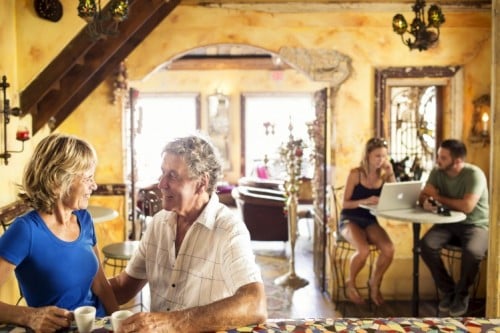
Language
Don’t worry – like most destinations in the Caribbean, English is common enough to find, and many of the island’s residents speak it well and widely. It’s a predominant language in Curaçao, so getting your meaning across to anyone you meet is easy enough.
However, for travelers whose ears are missing the music of a different language, Dutch is actually the official language spoken in Curaçao. However, most often, you’ll hear Papiamentu rolling off a native’s tongue. In case you’ve never heard that word before, it’s a Spanish Creole language with influences from Portuguese and Dutch languages, and exclusive to the ABC islands of Aruba, Bonaire, and Curaçao. So of course, if you keep an ear out, you’ll catch the sussurence of Spanish, in the wind, too! But in general, Papiamentu is an extraordinary lingo, so special to this destination that only less than 350,000 people speak it natively.

Food
Finally, the food. In fact, this whole article could be just about the food on Curaçao—that’s how distinctive it is and how much European influence is present in its cuisine! Here are some of the traditionally Dutch food you absolutely must try:
Kaas (Cheese)
Some things get better with age, and Dutch cheesemaking tradition is one of them. The Netherlands is the largest cheese exporter in the world, and kaas has been a part of this small European nation’s culture since 800 BCE. Wealthy Dutch folks in Curaçao have been importing Edam and Gouda into the Caribbean since 1634, eating the sweet, creamy cores and leaving the hard rinds for the enslaved people of the island. However, genius is born of necessity, and from this humble scrap came Keshi Yena.
This local dish is made by soaking these pieces, filling them with chicken and vegetables, then steaming them. You’ll be able to find this in many of the local restaurants for a taste of a uniquely blended culinary tradition, but if you’re a purist, make sure you try some Geitenkaas or Maasdammer, too.
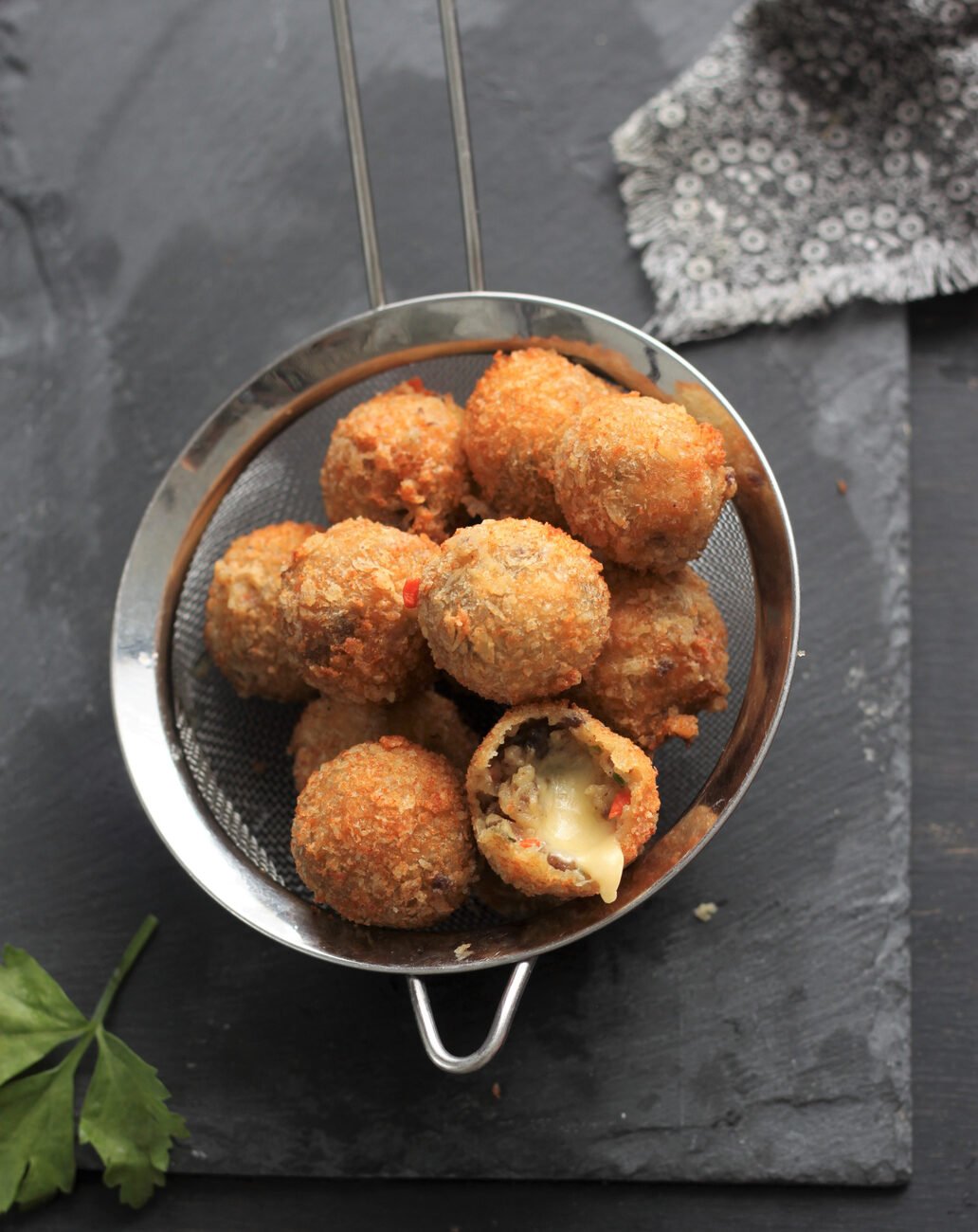
Bitterballen
Nothing bitter about these meaty balls! These snacks of beef or veal ragu, coated in coarse breadcrumbs then deep fried are the perfect accompaniment to a biertje, or beer. However, their name comes from a different accompaniment—this snack used to be served with bitter, herb-flavored liquors instead.
Get it at a café, snack stand, or restaurant, or better yet, as part of a bittergarnituur. These platters usually include oversized chunks of Gouda, loempias spring rolls, and spicy mustard.

Oliebollen
Fun to say and even more fun to eat, these deep-fried sweet dumplings dusted with powdered sugar are actually rumored to be the predecessor of the modern doughnut. Our sources over at the Curaçao Tourist Board tell us that “it seems very probably that early Dutch settlers took their tradition over to the New World, where it developed into the anytime snack the doughnut is today.”
In the Netherlands and in Curaçao, they’re less everyday than it is in the U.S., though. They’re most commonly found during the winter holidays and are a specific staple for New Year celebrations. Between Christmas and New Year’s, bakeries and supermarkets across the island make their own versions to make your visit even more special.
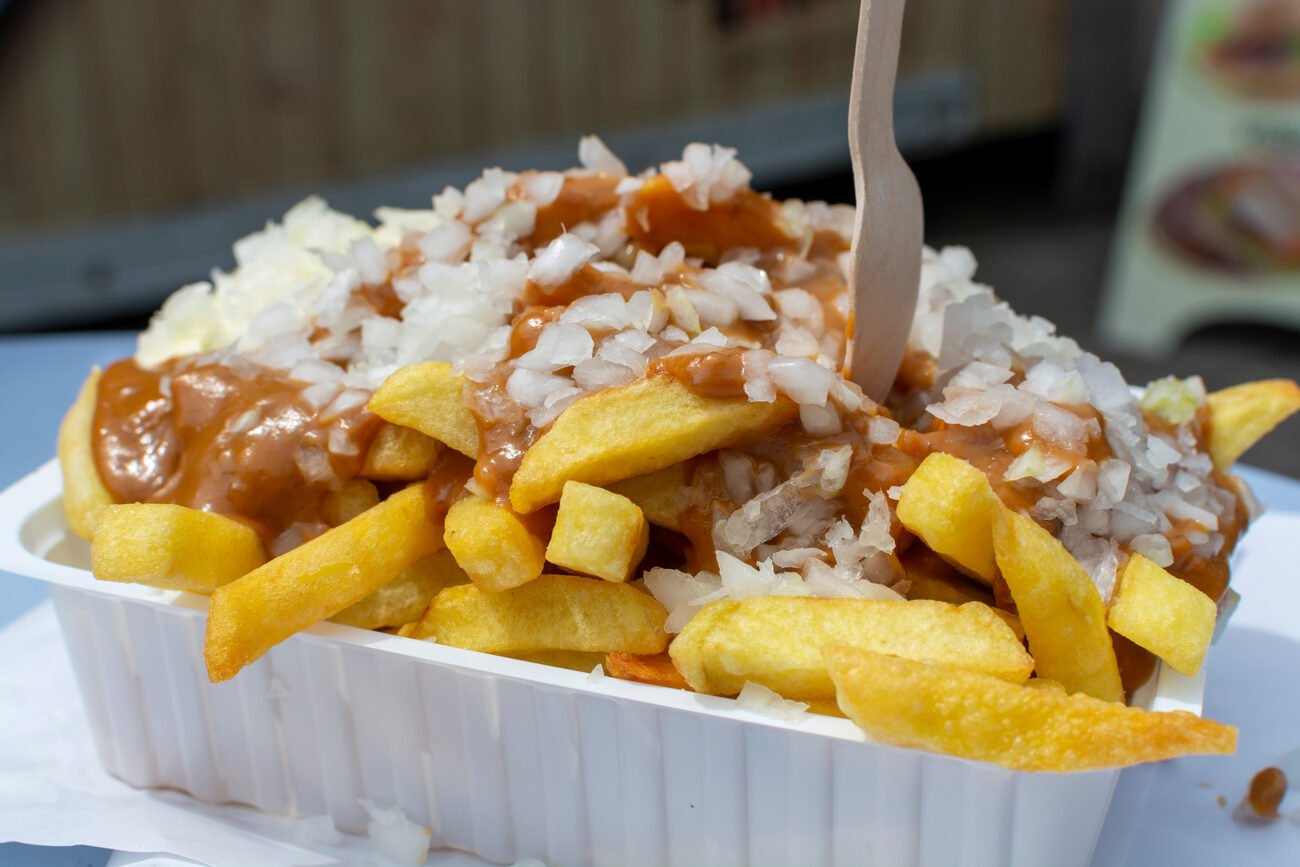
Patat Oorlog
Also known as friet, frieten and patat, Dutch fries are so popular among their native people that consumption averages over 40 pounds per person. And we can’t blame them! Because the way they’re topped is what makes them special … and irresistible.
Traditionally in the Netherlands, these fluffy fries are topped with mayonnaise, raw chopped onions, and peanut sauce. Together, they’re called patatje oorlong, which translates to “fries war” as their toppings battle for the flavor forefront. But if that classic combo isn’t your style, good old-fashioned tomato ketchup is still perfectly acceptable, and curry for those with more English taste sensibilities. Either way, look for local food trucks—these will be your best bet for the best rendition of this street food favorite.

Pannenkoeken & Poffertjes
Who doesn’t love pancakes? In Dutch culture, they love them so much, they have two different types, both of which are unique and delicious.
Pannenkoeken is a thin, plate-sized flapjack thicker than a French crepe but thinner than an American hotcake. Brunch-all-day fans will rejoice in knowing that in Curaçao, you can get them most often for dinner, topped in combinations of bacon and cheese, apples and raisins, vegetables, smoked salmon and crème fraiche, or whatever else an imaginative chef may have up their sleeve that day! Purists can opt for the plain version, which typically is dusted with confectioner’s sugar or sugar syrup.
Poffertjes are mini fluffy yeast and buckwheat cakes puffed up in cast iron pans—endlessly poppable coins of spongey carbohydrate goodness. These adorable airy treats have been enjoyed by the Dutch since the early 1700s, and by the world for nearly as long. Order these for lunch—they’ll usually be served to you on a small cardboard plate with a lump of butter and powdered sugar. They’re also popular at weddings and children’s birthday parties, so go ahead and feel celebratory as you pop poffertjes in Curaçao.
Looking for more ways to channel other missed destinations wherever you may be? Learn more about socially responsible travel, celebrating holidays like Cinco de Mayo from home, matching excursions to commercials, and other travel dreaming inspo right here on TravelBlogue.


